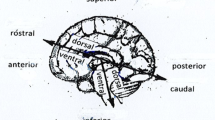Abstract
This article analyzes the trade-off between `caution' and `intensity' in the use of the control variable in a one-state one-control dynamic stochastic quadratic linear optimization problem with discount factor. It studies the effects that changes in uncertainty of the control parameter have on the optimal first period response of the control variable, showing that the trade-off between `caution' and `intensity' depends on the timing of the uncertainty. Given an increase in current uncertainty and an equal increase in future uncertainty, caution will always prevail over intensity. Moreover, the prevalence of caution will be enlarged as the increase in future uncertainty moves farther away into the future, while this prevalence will be reduced as the increase in future uncertainty expands into the future. Finally, for the infinite horizon case, caution is the optimal policy response.
Similar content being viewed by others
References
Amman, Hans M. and Kendrick, David A. (1999). The DUALI/DUALPC Software for Optimal Control Models: User's Guide. Center for Applied Research in Economics, The University of Texas, TP 9203, revised December 1999 (www.eco.utexas.edu/faculty/Kendrick/).
Amman, Hans M. and Kendrick, David A. (1999). Should macroeconomic policy makers consider parameter covariances? Computational Economics, 14 (3), 263–267.
Amman, Hans M., Kendrick, David A. and Neudecker, Heinz (1995). Numercial steady state solutions for nonlinear dynamic optimization models, unpublished.
Athans, M., Ku, R. and Gershwin S. (1977). The uncertainty threshold principle: Some fundamental limitations of optimal decision making under dynamic uncertainty. IEEE Transactions on Automatic Control, AC-22 (5), October.
Bertsekas, Dimitri (1995). Dynamic Programming and Optimal Control, Athena Scientific. Belmont, Massachusetts.
Brainard, William (1967). Uncertainty and the effectiveness of policy. American Economic Review, 57 (2), 411–425.
Christodoulakis, Nicos, Kemball-Cook, David and Levine, Paul (1993). The design of economic policy under model uncertainty. Computational Economics, 6 (3-4), 219–240.
Clarida, Richard, Gali, Jordi and Gertler, Mark (1999). The science of monetary policy: A new keynesian perspective. Journal of Economic Literature, XXXVII, 1661–1707, December.
Craine, Roger (1979). Optimal monetary policy with uncertainty. Journal of Economic Dynamics and Control, 1, 59–83.
Chow, Gregory (1973). Effect of uncertainty on optimal control policies. International Economic Review, 14 (3), 632–645.
Ghosh, Atish and Masson, Paul (1994). Economic Cooperation in an Uncertain World. Blackwell.
Holly, Sean and Hugues-Hallett, Andrew (1989). Optimal Control, Expectations and Uncertainty. Cambridge University Press.
Kendrick, David A. (1981). Stochastic Control for Economic Models. McGraw-Hill Book Company, New York.
Mercado, P. Ruben and Kendrick, David A. (2000). Caution in macroeconomics: Uncertainty and the relative intensity of policy. Economics Letters, 68 (1), 37–41.
Mercado, P. Ruben and Kendrick, David A. (1999). Computational methods for macro policy analysis: Hall and Taylor's model in DUALI. In A. Hugues-Hallett and P. McAdam (eds.), Analyses in Macroeconomic Modelling, Chapter 8, 179–206. Kluwer Academic Publishers, Boston and Dordrecht.
Shupp, Franklin (1976). Uncertainty and optimal stabilization policy. Journal of Public Economics, 6, 243–253.
Sack, Brian (2000). Does the fed act gradually? A VAR analysis. Journal of Monetary Economics, 46 (1), 229–256.
Turnovsky, Stephen (1975). Optimal choice of monetary instrument in a linear economic model with stochastic coefficients. Journal of Money, Credit and Banking, 7, 5180.
Wieland, Volker (1998). Monetary policy under uncertainty about the natural unemployment rate, finance and economics discussion series 98-22. Board of Governors of the Federal Reserve System, Washington, DC.
Author information
Authors and Affiliations
Rights and permissions
About this article
Cite this article
Mercado, P.R. The Timing of Uncertainty and the Intensity of Policy. Computational Economics 23, 303–313 (2004). https://doi.org/10.1023/B:CSEM.0000026788.19107.15
Issue Date:
DOI: https://doi.org/10.1023/B:CSEM.0000026788.19107.15




